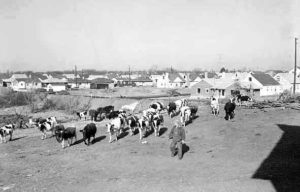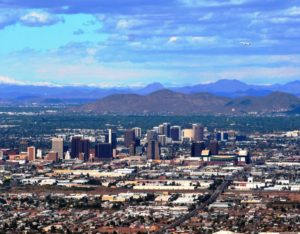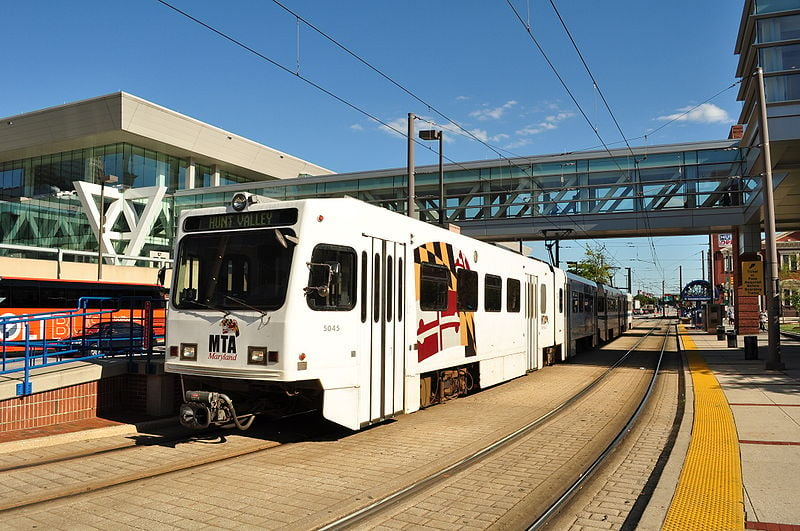In the United States, where transportation and land use are concerned, it seems like we’ve come such a long way. But, have we really?
While it is true that there have been tremendous advancements made in the transportation field – call these leaps-and-bounds gains, in the area of land use, while there has been much positive progress made of late, land use compared to transportation, progress-wise, sorely lags behind.
To put this into context, it is the suburban (horizontal) sprawl (suburbanization) model in America that took hold, now about 70 years old. Too much of a good thing? Hardly. It’s more a case of too much of the same thing!
The same could be said regarding transportation’s most common aspect: driving. There is too much of that, too. Congestion, gridlock and delay bog all of us down.
There once was a time …

I remember the time our family took summer Sunday drives. They enabled my brother and myself to see what country life was like up-close and personal, being that our family lived, ate and breathed almost everything city. This was our opportunity to take in the great outdoors, to see how people on the outside – so to speak – lived. That time, the late 1950s. Looking back, what a juxtaposition the two types of living were.
It was but a couple of decades later, as a matter of fact, that lines started getting blurred. What had been country (rural), more and more was becoming suburban. This was progress?!
Backtracking a bit, by the mid-1960s, the streetcars were gone, you know, those quaint trolleys that the people who rode them before my time no doubt took for granted. In nearly every case, the tram was replaced by the ubiquitous auto and to a lesser degree with the transit bus. The transportation landscape was a-changing.
As to the interface between urban and rural environments, not to worry: it’s still there, though its location has moved farther and farther out.
Not to get off on too much of a tangent, but, if you haven’t seen the cinematic production How the West Was Won, this pretty much tells America’s building, development, growth tale.
Then there is the PBS (Public Broadcasting System) series called 10 That Changed America, a few shows in the series having names like 10 Bridges That Changed America or 10 Buildings That Changed America or 10 Cities That Changed America or 10 Homes That Changed America or 10 Streets That Changed America and so forth and so on.
Trendsetter

The most memorable element in the 10 Cities episode was the Pacific Northwest-located-city Portland, Oregon – it has been transformed. While most American cities of Portland’s size over-sprawled, the Rose City kept urban growth manageable, much of the development turned inward inside what is today referred to as the urban growth boundary.
What has made transformation of Portland a success is summed up in three words, really, these being Transit-Oriented Development or TOD. In the Transit-Oriented Development: New Places, New Choices in the San Francisco Bay Area document, TOD “refers to the clustering of homes, jobs, shops and services in close proximity to rail stations, ferry terminals or bus stops offering access to frequent, high-quality transit services.”1 One fast gets the impression on this very thing that Portland wrote the book.
The city could have followed the growth and development paradigm that practically every other large or mega-city in America chose to. It didn’t. Portland, instead, chose to be a leader, an innovator, a pioneer.

Now places in the West like Denver, Los Angeles, Phoenix, Salt Lake City, the San Francisco Bay Area, Seattle, they are all playing TOD catch-up. In other words, the Rose City is leading by example.
Charles Hales, a Portland City Commissioner for transportation and land use at the time of the Portland Streetcar’s creation in Summer 2004 Rail, a Community Transportation Association of America publication, in the article “Coming to a Neighborhood Near You: Streetcars,” saw first-hand, as he put it, “the powerful effect this development-oriented transit infrastructure” was having in this city. At that time, the project had “already leveraged more than $1 billion in new development and doubled its initial ridership projections.” And, Hales added, “Across the country there is an emerging streetcar renaissance, including the successful Central City Streetcar in Portland, Ore. The modern, European-style system has stimulated enormous real estate investment and attracted thousands of middle-and upper-income residents to public transit.”
Treading carbon-lightly

That said, how has community air quality been affected as a result of these systems going in?
In a FastTrack Fresno County-sponsored “Streetcar Edition” special publication, there is some data, figures presented, the original source for this is listed as Street Smart: Streetcars and Cities in the 21st Century, authored by Gloria Ohland and Shelley Poticha, what looks to be a Reconnecting America-published book, copyright date 2009.
In terms of greenhouse gas reduction in an urban setting with very limited transit availability and lack of land-use mixing (a homogeneous building/development/growth style, in other words) the GHGs per listed component are as follows:
- Auto: 87%
- Pedestrian activity: 6%
- Other: 5%
- Biking activity: 1%
- Transit use: 1%
All else being equal, meanwhile, presumably, with transit and land-use mixing in relative abundance, this time GHGs per listed component are:
- Auto: 57%
- Pedestrian activity: 27%
- Transit use: 12%
- Biking activity: 2%
- Other: 2%
Notice the change one building, development, growth style against the other. (Source: FastTrack Fresno County, special “Streetcar Edition” publication. “The streetcar today: A tool to create connection and change,” date of publication unknown, p. 6).
A bygone era … returns!
Whereas Portland then opted for a more “outside-the-box” type building, development, growth approach beginning as early as the late 1960s or early ’70s, over on the opposite coast in the mid-Atlantic region, Baltimore, Maryland’s (the place of my birth) building, development, growth style was fashioned more along conventional lines. There was the port area and everything built out from there. Inner-ring neighborhoods were a mishmash of residences, businesses and factories, basically. Transportation in the early days consisted of horse-and-buggy, later horse-drawn streetcars and electric streetcars before the automobile was eventually embraced, each mode vying for street space.
By 1963, only one last vestige of a once extensive, proud and varied electric street railway system remained. Two years later even that was gone, the trolley in Baltimore consigned to the annals of the city’s and American history, etched forever in some people’s minds like mine.

Streetcars these days seem a mode to be reckoned with. There are systems in Tampa, Kansas City (Missouri), Tucson, Tempe, Seattle, Portland, Dallas, Kenosha (Wisconsin), New Orleans, San Francisco, Philadelphia, Cincinnati, Detroit, Salt Lake City, Oklahoma City, Milwaukee; many, many places having caught the bug.
Just for the record, since installed in the Greater Baltimore metropolitan area are both lightrail and subway systems. Good for them! (I have had the good fortune to have ridden the latter).

The landscape and pavement ahead?
What is especially important to understand, is that in 30 years’ time, cities will be home to two-thirds of the entire country’s population. This is up from about 50 percent today.
That kind of growth will demand preparation ahead of time. Without such, cities may find themselves scrambling to meet the demands placed on them. The challenge, in fact, could be a daunting one. Those communities that already have all the proper elements in place, and that already have a jump on the ones that don’t, have a good head start.
The good news: There is still time to get with the program.
Notes
- Transit-Oriented Development: New Places, New Choices in the San Francisco Bay Area, published jointly by the (San Francisco Bay Area) Metropolitan Transportation Commission, Association of Bay Area Governments, Bay Area Air Quality Management District and Bay Conservation and Development Commission, Nov. 2006, p. 3
Images: Minneapolis Star, collection of Minnesota Historical Society (top); Frank A. Woodfield, Library of Congress (second); DGustafson (third); AndrewHorne, Wikimedia Commons (bottom)
Editor’s Note: It was originally stated that Houston and Minneapolis-St. Paul have active streetcar systems. This post has since been revised to include the now-correct information.
This post was last revised on Jun. 13, 2020 @ 12:50 p.m. Pacific Daylight Time.
– Alan Kandel